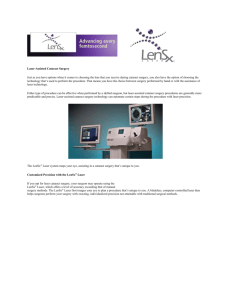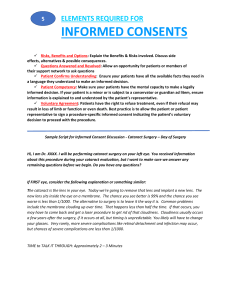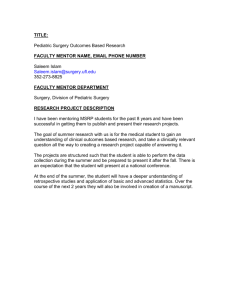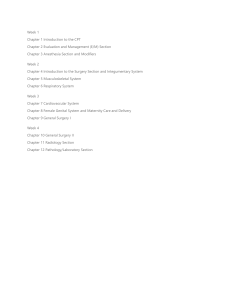Laser Cataract Surgery for Pediatric and Congenital Cataracts.docx
advertisement
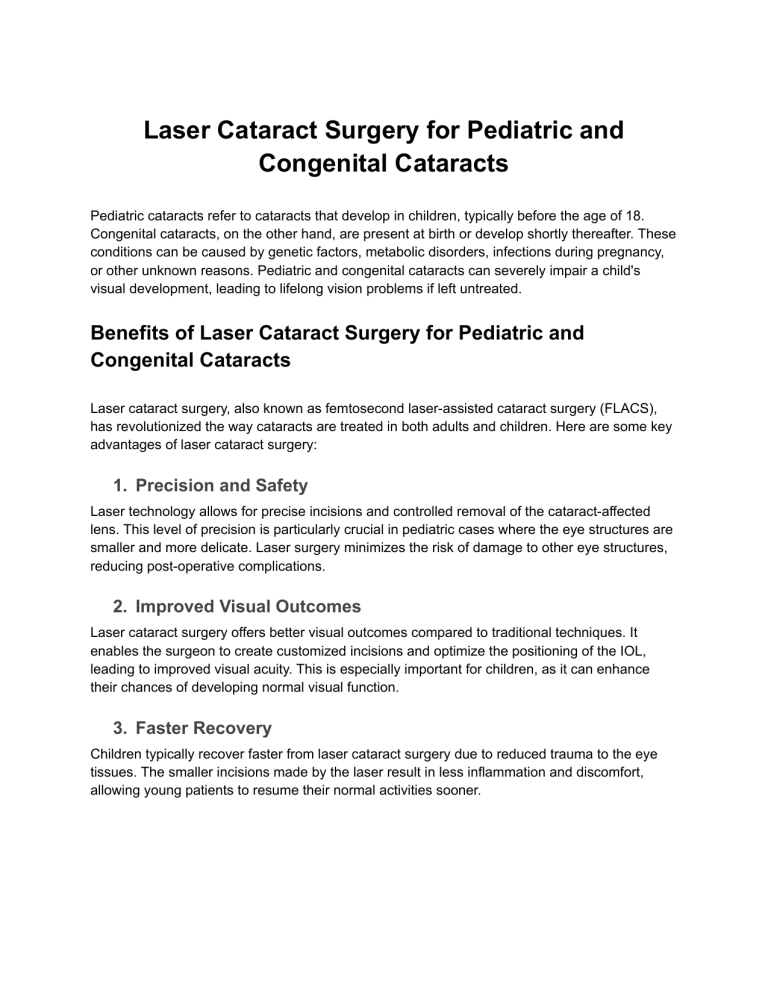
Laser Cataract Surgery for Pediatric and Congenital Cataracts Pediatric cataracts refer to cataracts that develop in children, typically before the age of 18. Congenital cataracts, on the other hand, are present at birth or develop shortly thereafter. These conditions can be caused by genetic factors, metabolic disorders, infections during pregnancy, or other unknown reasons. Pediatric and congenital cataracts can severely impair a child's visual development, leading to lifelong vision problems if left untreated. Benefits of Laser Cataract Surgery for Pediatric and Congenital Cataracts Laser cataract surgery, also known as femtosecond laser-assisted cataract surgery (FLACS), has revolutionized the way cataracts are treated in both adults and children. Here are some key advantages of laser cataract surgery: 1. Precision and Safety Laser technology allows for precise incisions and controlled removal of the cataract-affected lens. This level of precision is particularly crucial in pediatric cases where the eye structures are smaller and more delicate. Laser surgery minimizes the risk of damage to other eye structures, reducing post-operative complications. 2. Improved Visual Outcomes Laser cataract surgery offers better visual outcomes compared to traditional techniques. It enables the surgeon to create customized incisions and optimize the positioning of the IOL, leading to improved visual acuity. This is especially important for children, as it can enhance their chances of developing normal visual function. 3. Faster Recovery Children typically recover faster from laser cataract surgery due to reduced trauma to the eye tissues. The smaller incisions made by the laser result in less inflammation and discomfort, allowing young patients to resume their normal activities sooner. 4. Reduced Need for Anesthesia Laser cataract surgery is less invasive, often requiring less anesthesia than traditional surgery. This can be advantageous for pediatric patients who may be more sensitive to anesthesia or have medical conditions that require careful management during surgery. 5. Minimized Astigmatism Laser technology can also correct astigmatism during cataract surgery by precisely reshaping the cornea. This is especially relevant for children who may have significant astigmatism along with their cataracts. The Bottom Line Early laser treatment for cataracts and intervention is essential in pediatric cataract cases. Timely surgery, combined with the benefits of laser technology, can help children overcome the challenges posed by cataracts and lead a life with improved vision and a brighter future. It is important to consult with a pediatric ophthalmologist or a specialist experienced in pediatric and congenital cataract surgery to determine the most appropriate treatment plan for each individual case. With advancements in medical technology and surgical techniques, there is hope for better outcomes and improved quality of life for children with cataracts.
